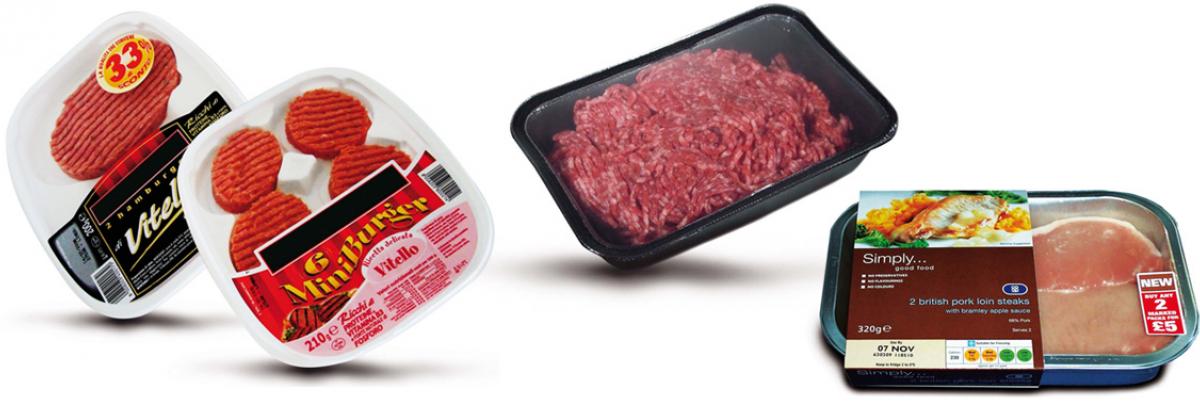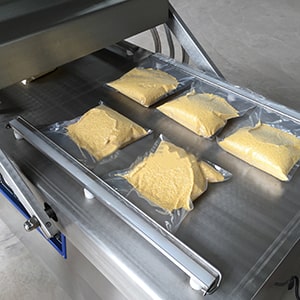Exposure to oxygen can cause deterioration of many foods due to oxidation of lipids and other oxygen-sensitive components such as aromas, colors, and vitamins (Fennema, 1996a; Gordon, 2004; Robertson, 2006d).
The Modified Atmosphere Packaging refers to a gas flushing packaging process. It can adjust different proportion gas compose to various food packaging in order to extend the shelf life of food. Quality and shelf life are enhanced due to reduction of oxidation and inhibition of aerobic microorganisms.
The MAP Packaging compliments refrigeration to retard chemical and/or microbiological deterioration of the food.
Red meat and poultry gas flushing packaging
The shelf life of red meat can be extended by vacuum packaging as oxidation reactions and growth of aerobic bacteria are inhibited.
Making a gas flushing packaging of red meat by means of a Modified Atmosphere Packaging machine with nitrogen and 20 to 30% carbon dioxide is recommended to retard oxidation and microbial growth in both red meat and poultry.
Pasta and baked products MAP packaging
Vacuum packaging can inhibit both oxidative rancidity and microbial degradation, especially mold growth for fresh pasta and baked products packaging, but a gas flushing of 50 to 100% carbon dioxide and 0 to 50% nitrogen are more common.
Chilled, prepared foods gas flushing packaging
Chilled, prepared foods such as pasta, pizza, precooked meats and complete dishes are increasingly packaged in a modified atmosphere with no oxygen and >25% carbon dioxide, with the remainder nitrogen.
Fresh fruits and vegetables MAP packaging
Fresh fruits and vegetables are respiring and thus need a modified atmosphere that allows permeation of oxygen in and carbon dioxide out at appropriate rates. Proper design of fruit and vegetable packaging takes into account the different respiration rates of different fruits and vegetables and controls package-head-space oxygen and carbon dioxide concentrations to targeted levels that reduce product respiration rate and increase shelf life (Zagory, 1997).
REFERENCES: [Handbook of Food Engineering Second Edition Food Science and Technology]





